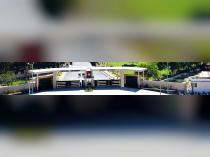What is the NATA cutoff for Chitkara School of Planning and Architecture 2023?
-
2 Answers
-
The NATA cutoff for Chitkara School of Planning and Architecture is released and the qualifying marks for NATA 2023 were 70 out of 200.
To be eligible for admission to the B.Arch. programme at Chitkara School of Planning and Architecture, candidates must:
1. Pass class XII or equivalent with Physics, Chemistry, and Mathematics subjects
2. Qualify NATAFor more accurate and the latest information please visit the official website of Chitkara School of Planning and Architecture or by contacting the admission office. It is imperative to follow all the guidelines to get the accurate information.
-
The general NATA cutoff for Chitkara School of Planning and Architecture in 2023 vary in the range of 75- 85 out of 200, based on various aspects of competition and merit. However, the mentioned cutoffs can be year or course precise. This also should be advised to check directly from the college as the current and accurate has likely to change.
Similar Questions for you
Nirma University NATA cutoff 2024 has been released for admissions to BArch programme. In the first round NATA Cutoff 2024 was 11086 for the General AI category, and the last round closing cutoff was also 11086. For the General HS quota, the closing cutoff was again 11086.
On the other hand, for the OBC AI and OBC HS category, the last round cutoff at Nirma University was 21049 and 11334, respectively.
Yes, candidates have to qualify AAT after qualifying JEE Advanced to be eligible for IIT BArch admissions.
In the NATA Drawing section, questions are designed to test your creativity, imagination, visualisation, and sketching ability. You won't be judged on artistic perfection, but on clarity, proportion, perspective, and originality.
Here are the common types of questions asked:
Sketching from Memory – Draw objects, scenes, or daily life situations (e.g., a park, a market scene, a classroom).
Perspective Drawing – Create 2D/3D views of buildings, interiors, or street views using correct perspective.
Composition & Design – Create an interesting composition using given shapes, forms, or objects.
Proportion & Scale – Draw human figures, fu
Yes, NCERT Mathematics (Class 11 & 12) is generally enough for NATA preparation because most of the topics in the syllabus are covered in NCERT.
The NATA Mathematics section usually tests:
Algebra
Trigonometry
Coordinate Geometry
Matrices & Determinants
Probability & Statistics
Vectors
Differential & Integral Calculus
NCERT will give you a strong base, but since NATA questions are often application-based, you may also want to:
Practice MCQs and previous year NATA/JEE Paper 2 Maths questions
Strengthen speed and accuracy in problem-solving
Use reference books (like R.D. Sharma or Arihant) if you want extra practice
So, NCERT is sufficient for concep
For NATA, you don't need to study architecture as a full subject before the exam. However, having a basic awareness is very helpful because the General Aptitude section includes questions on:
- Famous architects (like Le Corbusier, B.V. Doshi, Zaha Hadid, etc.)
- Well-known monuments and buildings in India and abroad
- Basic architectural terms (e.g., façade, elevation, plan, symmetry)
- Environmental and design awareness (sustainable design, urban planning, materials)
- So instead of studying architectural theory in depth, focus on:
- Reading about important structures and landmarks
- Learning about basic design principles (proportion, balance, perspecti
Taking an Exam? Selecting a College?
Get authentic answers from experts, students and alumni that you won't find anywhere else
Sign Up on ShikshaOn Shiksha, get access to
- 65k Colleges
- 1.2k Exams
- 681k Reviews
- 1800k Answers




